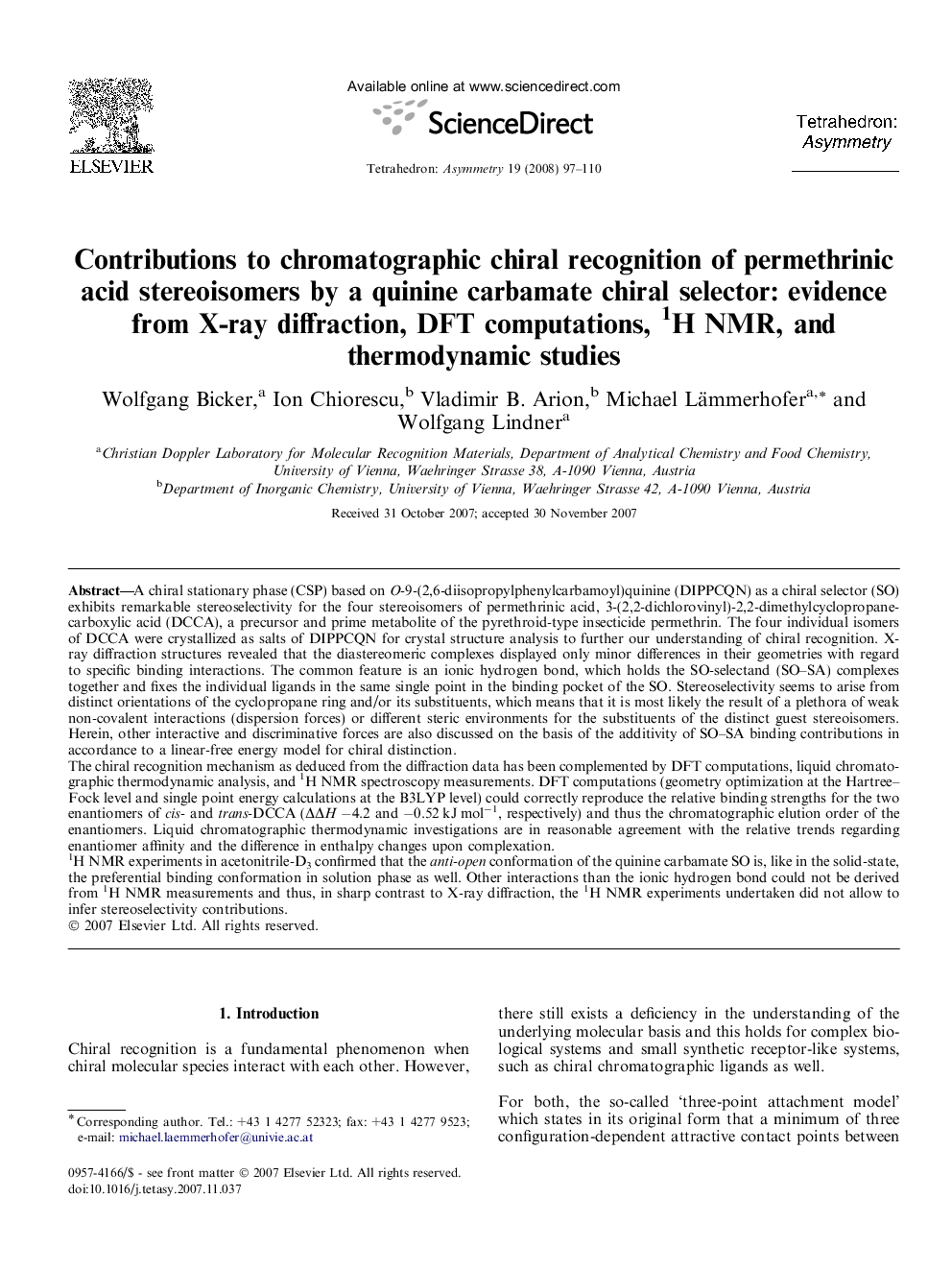| کد مقاله | کد نشریه | سال انتشار | مقاله انگلیسی | نسخه تمام متن |
|---|---|---|---|---|
| 1348186 | 980343 | 2008 | 14 صفحه PDF | دانلود رایگان |

A chiral stationary phase (CSP) based on O-9-(2,6-diisopropylphenylcarbamoyl)quinine (DIPPCQN) as a chiral selector (SO) exhibits remarkable stereoselectivity for the four stereoisomers of permethrinic acid, 3-(2,2-dichlorovinyl)-2,2-dimethylcyclopropanecarboxylic acid (DCCA), a precursor and prime metabolite of the pyrethroid-type insecticide permethrin. The four individual isomers of DCCA were crystallized as salts of DIPPCQN for crystal structure analysis to further our understanding of chiral recognition. X-ray diffraction structures revealed that the diastereomeric complexes displayed only minor differences in their geometries with regard to specific binding interactions. The common feature is an ionic hydrogen bond, which holds the SO-selectand (SO–SA) complexes together and fixes the individual ligands in the same single point in the binding pocket of the SO. Stereoselectivity seems to arise from distinct orientations of the cyclopropane ring and/or its substituents, which means that it is most likely the result of a plethora of weak non-covalent interactions (dispersion forces) or different steric environments for the substituents of the distinct guest stereoisomers. Herein, other interactive and discriminative forces are also discussed on the basis of the additivity of SO–SA binding contributions in accordance to a linear-free energy model for chiral distinction.The chiral recognition mechanism as deduced from the diffraction data has been complemented by DFT computations, liquid chromatographic thermodynamic analysis, and 1H NMR spectroscopy measurements. DFT computations (geometry optimization at the Hartree–Fock level and single point energy calculations at the B3LYP level) could correctly reproduce the relative binding strengths for the two enantiomers of cis- and trans-DCCA (ΔΔH −4.2 and −0.52 kJ mol−1, respectively) and thus the chromatographic elution order of the enantiomers. Liquid chromatographic thermodynamic investigations are in reasonable agreement with the relative trends regarding enantiomer affinity and the difference in enthalpy changes upon complexation.1H NMR experiments in acetonitrile-D3 confirmed that the anti-open conformation of the quinine carbamate SO is, like in the solid-state, the preferential binding conformation in solution phase as well. Other interactions than the ionic hydrogen bond could not be derived from 1H NMR measurements and thus, in sharp contrast to X-ray diffraction, the 1H NMR experiments undertaken did not allow to infer stereoselectivity contributions.
Figure optionsDownload as PowerPoint slide
Journal: Tetrahedron: Asymmetry - Volume 19, Issue 1, 30 January 2008, Pages 97–110